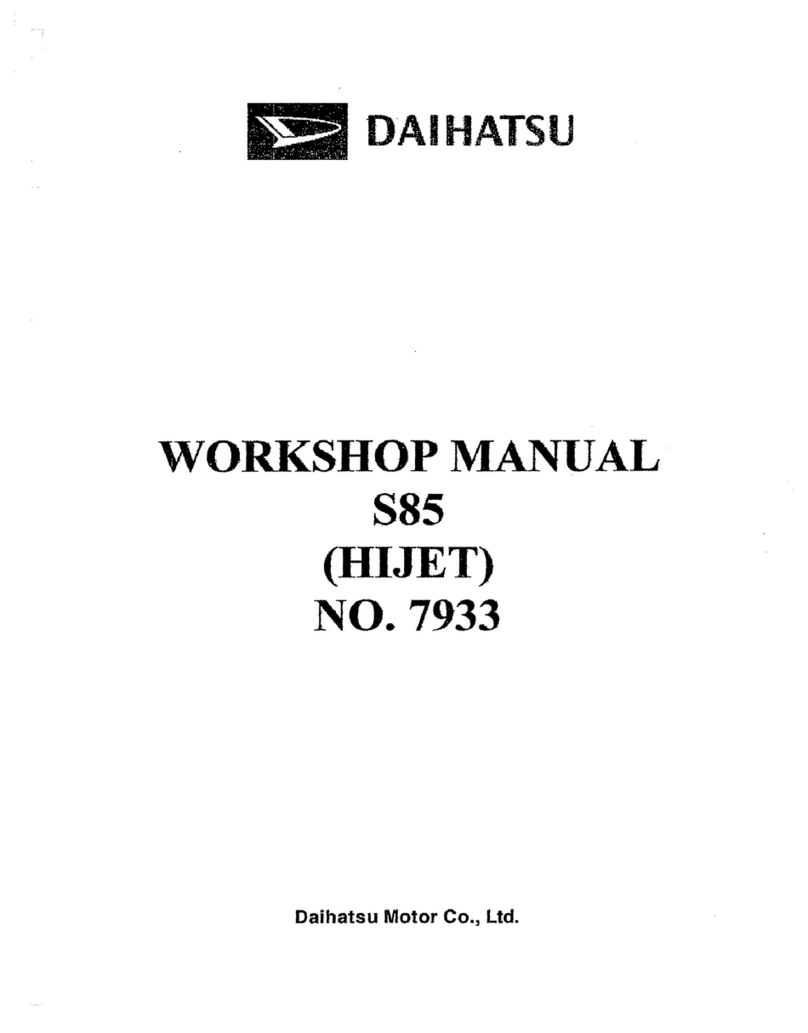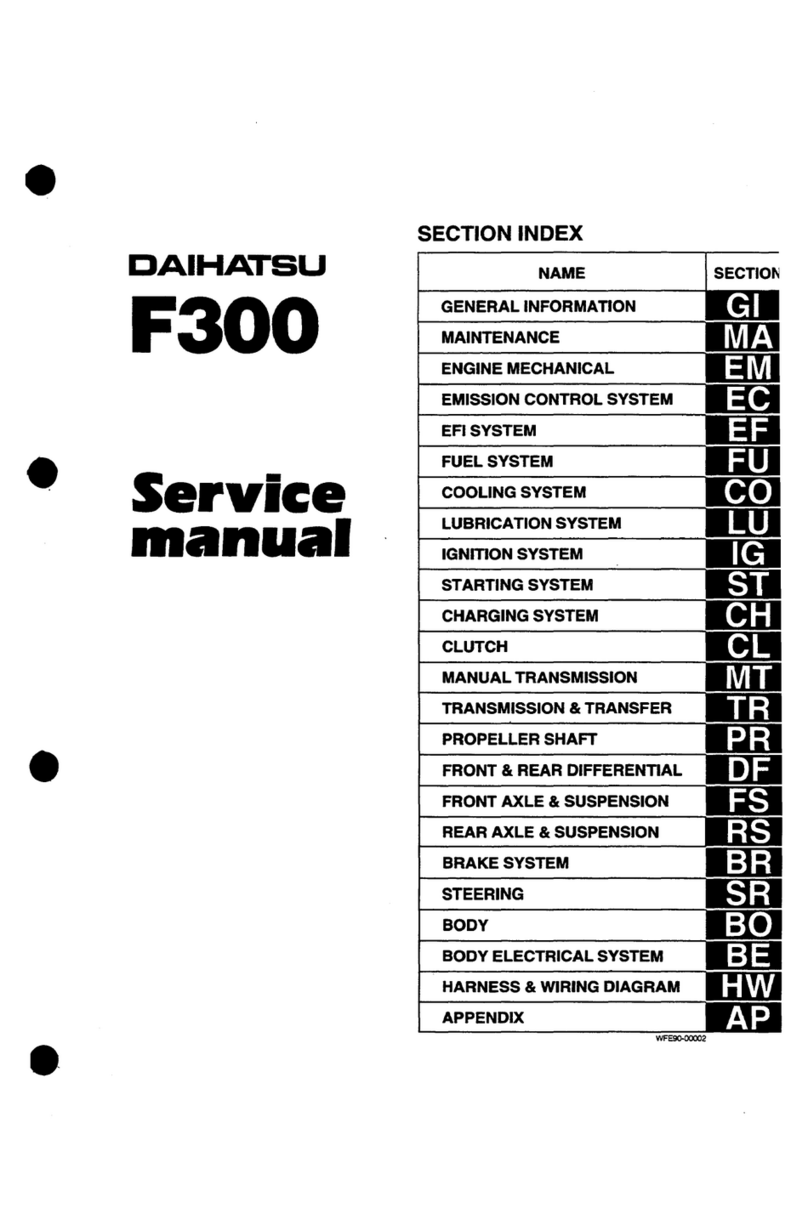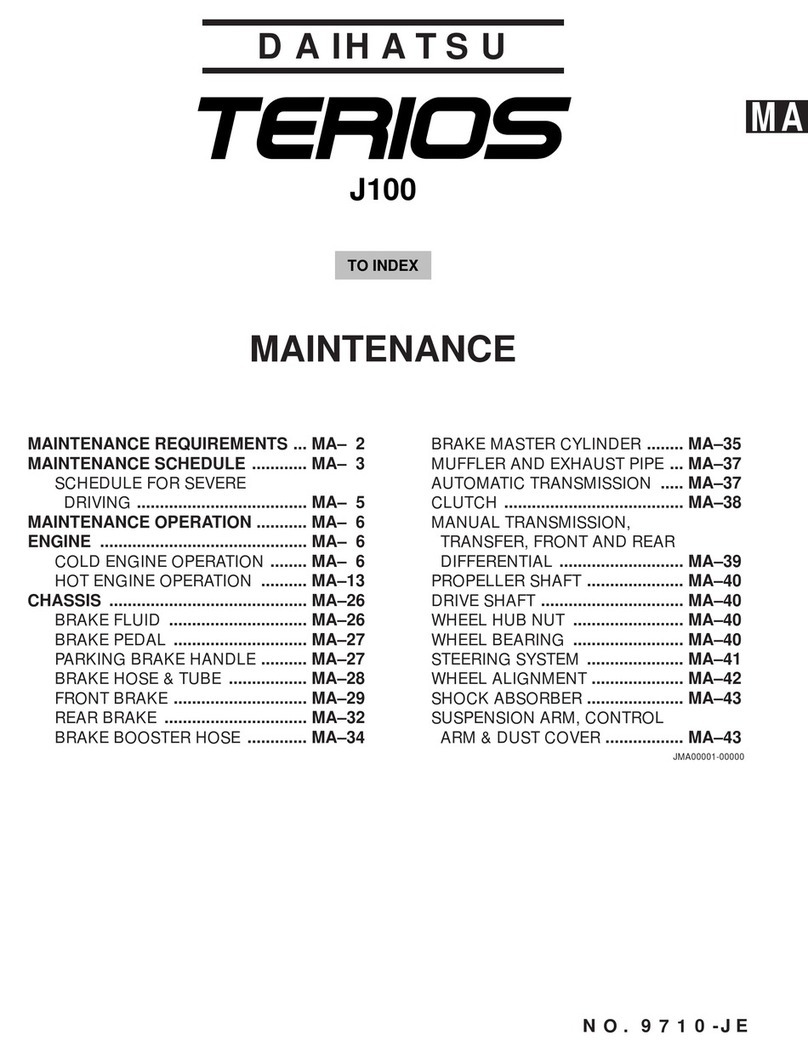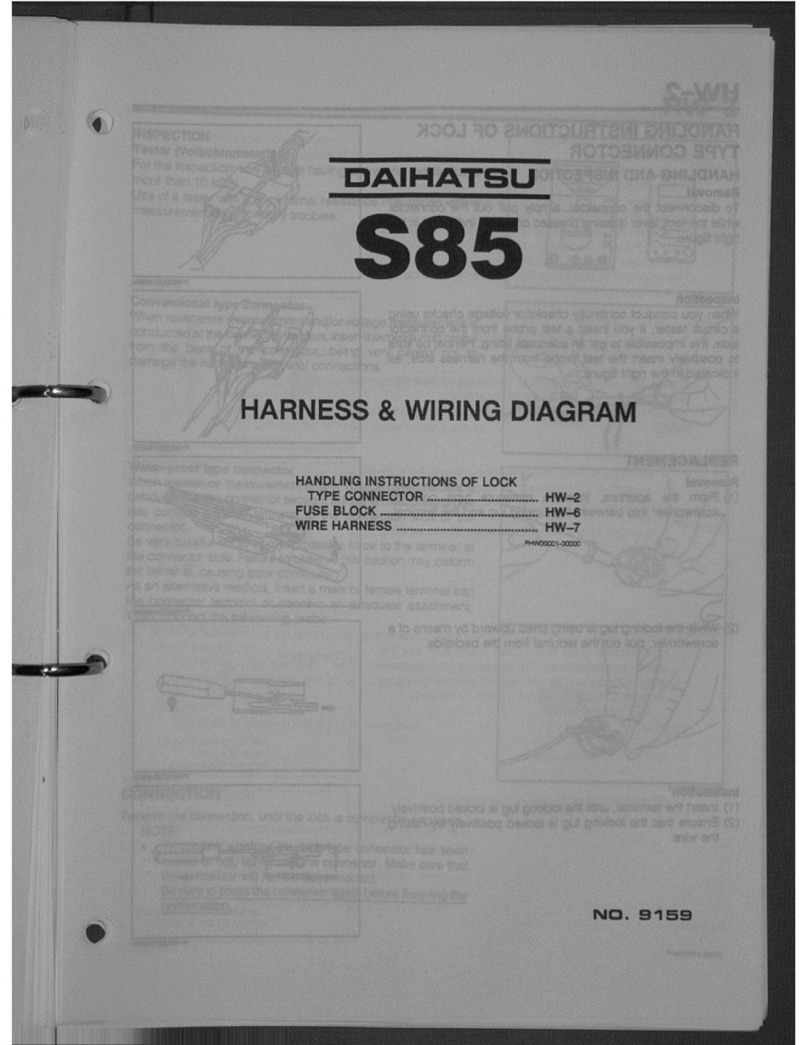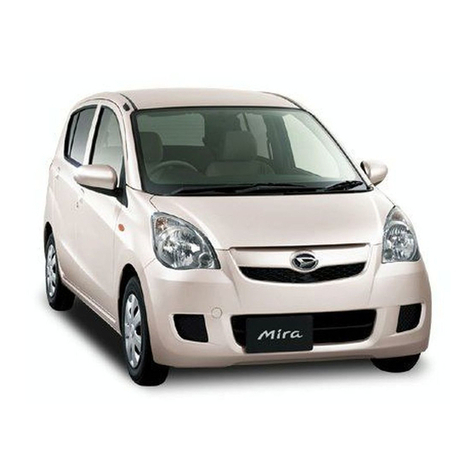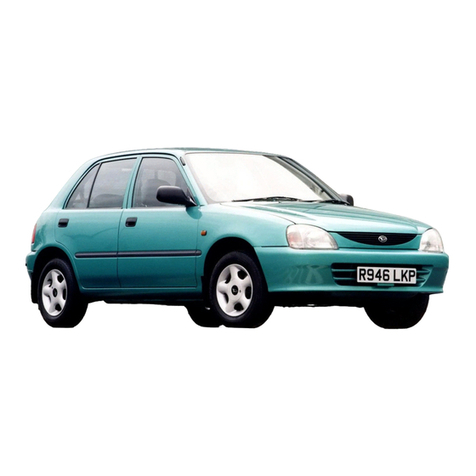IMPORTANT SAFETY NOTICE
The vehicle is a machine comprising a great number of parts. Basically speaking, the vehicle is
potentially hazard. However, one can handle it safely if he has the required knowledge.
Correct service methods and repair procedures are very vital for assuring not only the safety and
reliability of a vehicle, but also the safety of service personnel concerned.
The methods and procedures contained in this manual describe in a general way the techniques
which the manufacturer has recommended. Thus, they will contribute to ensuring the reliability of
the products. The contents of the servicing operations come in a wide variety of ways. Moreover,
techniques, tools and parts necessary for each operation are different widely from each other.
This manual does not cover all details of techniques, procedures, parts, tools and handling instruc-
tions which are necessary for these operations, for such coverage is impossible. Hence, any one
who obtains this manual is expected first to make his responsible selection as to techniques, tools
and parts which are necessary for servicing the vehicle concerned properly. Furthermore, he must
assume responsibility for his actions in connection with his own safety.
Therefore, one should not perform any service if he is not capable of making responsible selection
and/or if he can not understand the contents herein described, for this manual has been prepared
for experienced service personnel.
WARNINGS, CAUTIONS AND NOTES
All these symbols have their specific purposes, respectively.
WARNING:
•This symbol means that there is the possibility of personal injury of the operator himself or the
nearby workers if the operator fails to follow the operating procedure prescribed in this manual.
CAUTION:
•This symbol means that there is the possibility of damage to the component being repaired if
the operator fails to follow the operating procedure prescribed in this manual.
NOTE:
•To accomplish the operation in an efficient manner, additional instructions concerning the
operation are given in this section.
The following list describes general WARNINGS:
•Always wear safety glasses for eye protection.
•Use safety stands whenever a procedure requires you to be under the vehicle.
•Be sure that the ignition switch is always in the OFF position, unless otherwise required by the
procedure.
•Set the parking brake when working on the vehicle.
•Operate the engine only in a well-ventilated area to avoid the danger of carbon monoxide.
•Keep yourself and your clothing away from moving parts, when the engine is running, especial-
ly from the fan and belts.
•To prevent serious burns, avoid contact with hot metal parts, such as the radiator, exhaust
manifold, tail pipe, catalytic converter and muffler.
•Do not smoke while working on a vehicle.
•To avoid injury, always remove rings, watches, loose hanging jewelry, and loose clothing before
beginning to work on a vehicle.
•Keep hands and other objects clear of the radiator fan blades! The electric cooling fan is mounted
on the radiator and can start to operate at anytime by a rise in coolant temperature or turning ON
of the air conditioner switch in the case of vehicles equipped with an air conditioner. The electric
cooling fan is also mounted on the condenser for air conditioner and starts to operate anytime
when the air conditioner switch is turned “ON”. For this reason care should be taken to ensure that
the electric cooling fan motor is completely disconnected when working under the hood.
GI–2
